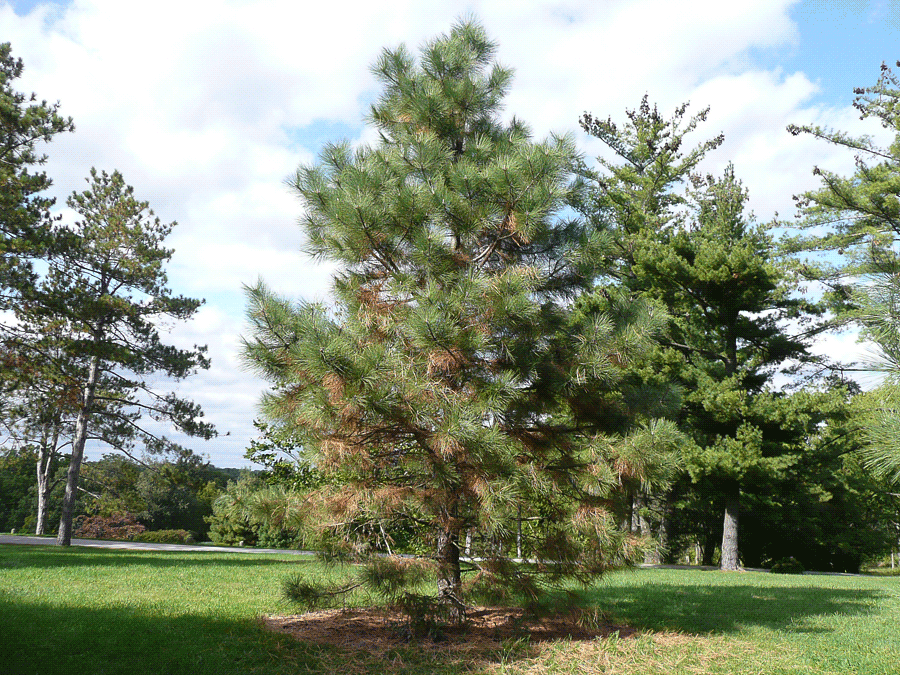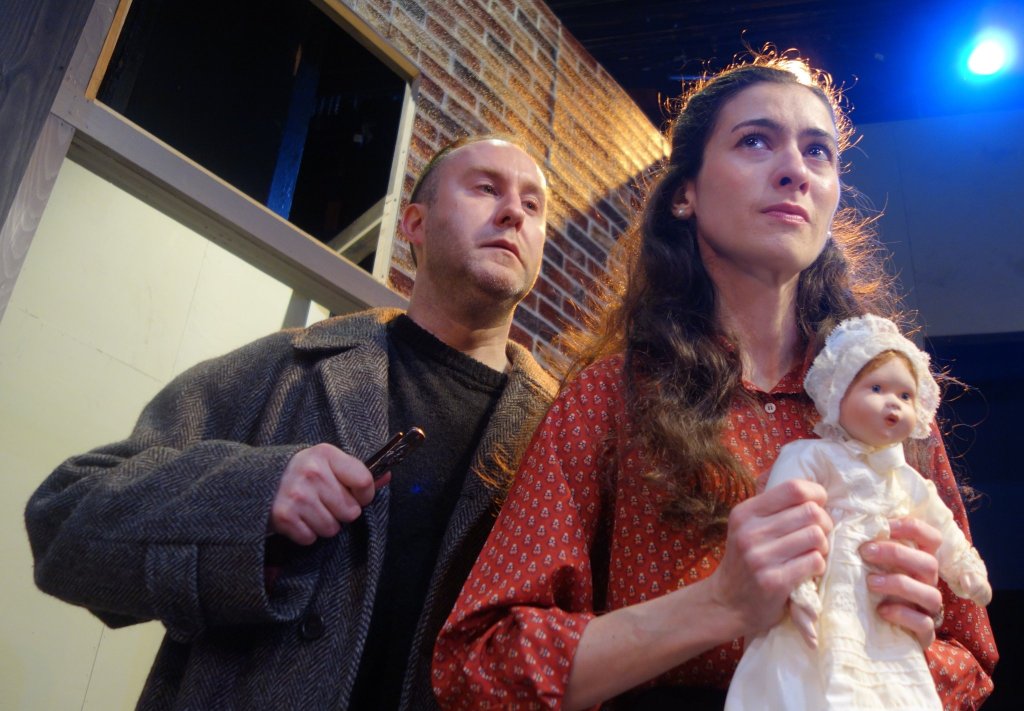What Is Happening to My Japanese Pine Trees?

In the Hamptons, Japanese Pine Trees are an absolutely stunning addition to your landscape, but you need to be on the lookout for potential threats. Fox Tree Service president Bart L. Fusco—a Certified Arborist and Registered Consulting Arborist—is here to share his insights on identifying and fighting an insect infestation that could do permanent damage.
The Question: Why are my Japanese Pine Trees dying?
The Answer from Bart L. Fusco of Fox Tree Service: If you have Japanese Black Pines (Pinus thunbergiana) or Pitch Pines (Pinus rigida) planted in your landscape, you need to be aware of the danger of attack on your trees by the Black Turpentine Beetle (Dendroctonus terebrans). The Black Turpentine Beetle belongs to a group of beetles that characteristically mine between the bark and the wood of trees, and are found throughout the eastern United States. The most common indicator of attack is the presence of “pitch tubes” on the lower six feet or so of the tree’s trunk, where the insects have bored through the outer layer of bark to construct their galleries in the sapwood. Identification of an infestation is most often noticed only after there are many pitch tubes present. This is caused by resin that flows from the wood, the insect’s chewed wood shavings (frass), and bark borings which are mixed in the beetle’s gallery (tunnel) and pushed outside the entrance hole by the insect.
Like many bark borers, these beetles will tend to attack trees that are under stress from factors such as drought, root damage, or recent transplanting. They also will attack older black pines and are attracted to the stumps of pines still present after the tree has been removed. Although this insect attacks over 40 species of domestic and foreign conifers, pines are the most common host. Black turpentine beetles are attracted to the odor of resin at bruised bark or freshly cut stumps. Beetles emerge in the spring from recently cut stumps and dying and/or infested trees.
The pitch tube in the photograph on the left is just inches from the existing soil grade. The photograph of the stump shows how Blue Stain fungus colors the wood.
A short version of the life cycle:
Eggs are laid in an elongate mass along the side of the egg gallery and are partitioned off from the adult gallery by a wall of pitchy borings.
As they grow, they feed more extensively and make an irregularly margined, fan-shaped gallery, killing this section of the tree’s vascular system. The dead area may vary from a few inches to more than a foot wide. When so many beetles attack that the tunnels overlap and girdle the cambium layer under the bark, the tree will die.
The insect soon bores outward through the bark and flies away to new host material. Several may use the same exit hole. The beetles are capable of flying more than 10 miles.
On Long Island, the insect overwinters in the adult stage, which is a reason that sanitation can be effective.
They can also cause the decline and death of infested trees by acting as a vector for the blue stain fungus (Leptographium spp.) which then clogs the vascular system of the trees and causes death.
The blue stain fungus travels from tree to tree on a special structure in the beetle’s mouthparts. This is the fungus’s means to travel to new trees. The fungus helps the beetle by stopping the tree from producing its natural defense resin, and the beetles are than able to mine and lay eggs while avoiding the tree’s defenses. The fungus also benefits the beetles by improving the host environment for the beetle’s next generation, and serves as food for the larvae and adult beetles. A healthy tree is therefore colonized by this disease and adds to the tree’s decline. As the fungus grows, it blocks the sap flow, which eventually kills the tree. The damage can be seen in the wood of the tree, hence the name “blue stain” fungus.
These two trees (one single and one double trunk pine tree) died over a three year period. The first tree was removed, however the stump was left, allowing some of the adults to emerge and attack the adjacent tree. The next year, one half of the double trunked pine tree was removed and this past winter the rest of the tree died, was removed, still leaving the stumps. Notice how the Blue Stain Fungus followed the insect infestation. Unfortunately, there is no treatment for this disease.
Another variety of bark-boring beetles can attack weakened or stressed trees. The most commonly known are the Ips or pine engraver beetle. Usually, trees are older, have had root areas damaged, or are severely drought-stressed.
These White Pines adjacent to the stumps are being attacked by another of the bark beetles, the Ips Beetle. The trees on this site are under stress and many insects are being attracted to the area.
Chemical Vs Sanitation:
Lindane was the pesticide most effective in preventing attacks and in killing insects already beneath the bark. However, this pesticide has been removed from New York State as a tree pesticide, and other less successful pesticides are all that are available at this time. Although these other pesticides do not have the residual of Lindane, their use as a bark spray can be effective as a preventative treatment if applied at regular intervals.
Keep existing black pines vigorous through proper watering, fertilization and control of competition. Inspect all trees for boring insects when the conditions are dry. The frass and other signs of feeding can be observed easier on dry bark, not recently cleaned from a rain shower.
Which leaves sanitation a very useful way of dealing with this insect. Be prepared to immediately remove dying or heavily infested pines and grind their stumps below grade.
Pines are often used for screening, by planting saplings at three- or five-year intervals, in the area or under existing older black pines, they will act as replacements when the older pines fail due to age or attack by borers.
For more information on the pine trees in your yard or any other tree-related matters, you can contact Fox Tree Service in Suffolk at 631-283-6700, and in Nassau at 516-921-7111, or visit online at foxtreeservice.com.



